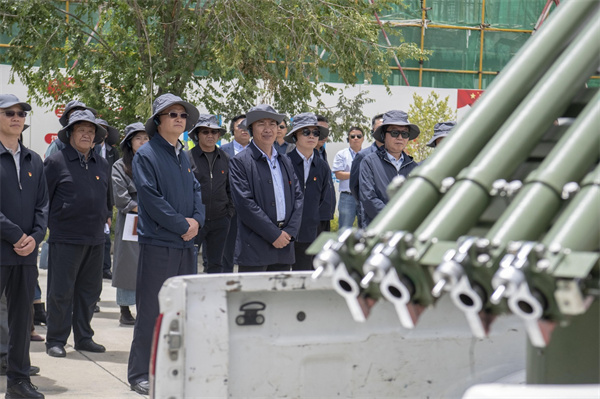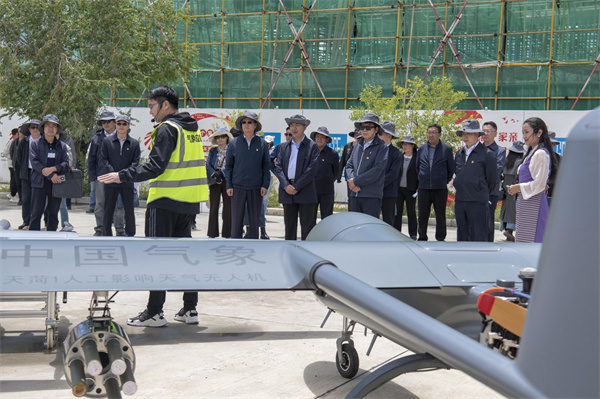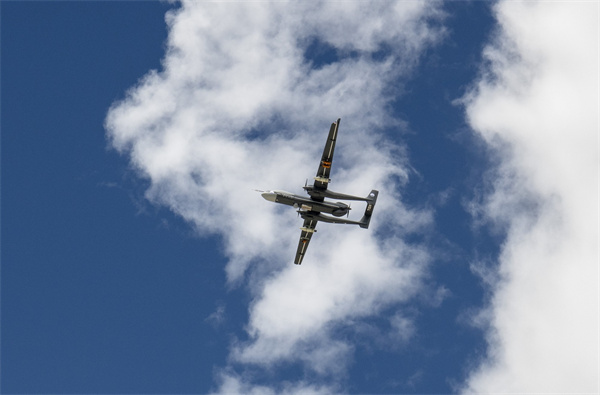Weather modification making a difference in Tibet
Updated: 2023-08-23 By Daqiong and Palden Nyima in Lhasa (chinadaily.com.cn)  Print
Print 



Regional officials inspect equipment used in artificial weather modification work in the Tibet autonomous region. [Photo provided to chinadaily.com.cn]
Artificial weather modification is expected to play a big role in promoting high-quality growth and improving environment in the Tibet autonomous region, the regional weather bureau said on Wednesday.
The weather service has evolved from its initial role in drought and hail mitigation to ensuring security in food, ecology, water and other areas.
Artificial weather modification mainly involves altering the physical and chemical processes of the atmosphere to avoid or mitigate meteorological disasters, and achieve the goals of increasing rain and snow.
At present, more than 220,000 hectares of farmland in the region have been shielded from hail disasters via weather modification. Such operations have been conducted nearly 1,000 times in the rural areas of Shigatse and Lhasa. The techniques have greatly contributed to bumper harvests of crops in the region, the bureau said.
Tibet is plagued by uneven distribution of precipitation.
Meteorological monitoring data over the past 30 years shows that average annual precipitation ranged from 66.3 millimeters, recorded in an observation station in Ngari Prefecture, to 2,093 millimeters in the more humid Nyingchi Prefecture.
"The uneven distribution of water has become a significant obstacle to the high-quality development of Tibet, and there is an urgent need and huge potential for artificial precipitation operations in the region," Weng Haiqing, deputy head of the bureau of meteorological administration, said on Wednesday.
"Scientific research done by Chinese scientists on the Qinghai-Tibet Plateau shows that in the context of global warming, the cryosphere and glaciers in the plateau region have been retreating, making it imperative to carry out artificial operations to restore ecological balance."
During the 13th Five-Year Plan period (2016-20), the region invested more than 92 million yuan ($13 million) on the construction of weather modification infrastructure.
So far, 223 weather modification operation sites along with 100 monitoring systems have been set up in the region.
"The region has been making efforts to accelerate the standard construction of artificial weather modification sites," Weng said.
"Pursuing major strategies such as food and ecological security, we have carried out operations for hail prevention, drought resistance, artificial precipitation enhancement and ecological restoration in rural areas."

Regional officials inspect equipment used in artificial weather modification work in the Tibet autonomous region. [Photo provided to chinadaily.com.cn]

Large unmanned aerial vehicles have been used to carry out artificial weather modification work in the Tibet autonomous region. [Photo provided to chinadaily.com.cn]








